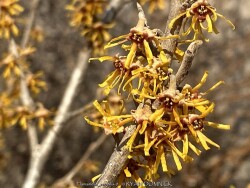

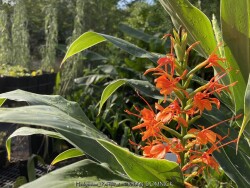

Hardy Ginger (Hedychium) are typically grown for their late summer flowers and vertical wide-leaf foliage. The plants are large tropical and subtropical herbaceous perennials with a rhizomatous rootstock native to areas with a summer monsoon and dry winter. They can be grown as flowering summer patio plants. If growing as a potted plant and trying to overwinter, allowing the foliage to frost is ok, it will not kill the root system. However, do not allow the pot with rootball to freeze solid or go below 20 degrees for more than a few hours; move into a cold garage or basement over the winter with no watering. Cut back and allow to go dormant and place entire pot back out in April or May with a time-release fertilizer. Another more labor intensive way to overwinter cannas is to remove them from the dirt, dust with fungicide, place in box with sawdust, and keep in the refrigerator. We consider this method old-fashioned and too much work but ok if you only want to save a few pieces. If digging from the ground, just save a big chunk with the dirt intact and place into a large pot in the garage. During the growing season, fertilize, water regularly, and place in full sun. You may also plant these in the ground for an enormous tropical effect! It is possible to overwinter these in the ground in Kansas by mulching 6-12" thick over deeply planted rhizomes. New growth may be slightly delayed but probably quick to regain full height. Native habitat for most hedychiums aligns well with our dry winters and warm humid summers. In our trial gardens in Lawrence, KS (zone 6a), we will be testing several varieties in 2022-2023. Famous plantsman, Tony Avent, owner of Plant Delights Nursery in Raleigh, North Carolina, advised us that hedychiums should survive fine here in the ground when mulched like cannas. Hedychium 'Raffillii' features bright orange flowers that can reach 18 inches above the 5-6 feet canes.
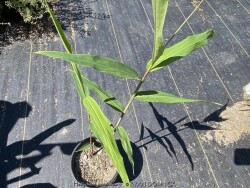

Hardy Ginger (Hedychium) are typically grown for their late summer flowers and vertical wide-leaf foliage. The plants are large tropical and subtropical herbaceous perennials with a rhizomatous rootstock native to areas with a summer monsoon and dry winter. They can be grown as flowering summer patio plants. If growing as a potted plant and trying to overwinter, allowing the foliage to frost is ok, it will not kill the root system. However, do not allow the pot with rootball to freeze solid or go below 20 degrees for more than a few hours; move into a cold garage or basement over the winter with no watering. Cut back and allow to go dormant and place entire pot back out in April or May with a time-release fertilizer. Another more labor intensive way to overwinter cannas is to remove them from the dirt, dust with fungicide, place in box with sawdust, and keep in the refrigerator. We consider this method old-fashioned and too much work but ok if you only want to save a few pieces. If digging from the ground, just save a big chunk with the dirt intact and place into a large pot in the garage. During the growing season, fertilize, water regularly, and place in full sun. You may also plant these in the ground for an enormous tropical effect! It is possible to overwinter these in the ground in Kansas by mulching 6-12" thick over deeply planted rhizomes. New growth may be slightly delayed but probably quick to regain full height. Native habitat for most hedychiums aligns well with our dry winters and warm humid summers. In our trial gardens in Lawrence, KS (zone 6a), we will be testing several varieties in 2022-2023. Famous plantsman, Tony Avent, owner of Plant Delights Nursery in Raleigh, North Carolina, advised us that hedychiums should survive fine here in the ground when mulched like cannas. Hedychium coccineum features orange flowers.
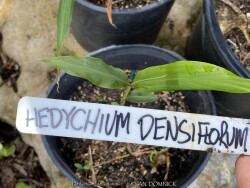

Hardy Ginger (Hedychium) are typically grown for their late summer flowers and vertical wide-leaf foliage. The plants are large tropical and subtropical herbaceous perennials with a rhizomatous rootstock native to areas with a summer monsoon and dry winter. They can be grown as flowering summer patio plants. If growing as a potted plant and trying to overwinter, allowing the foliage to frost is ok, it will not kill the root system. However, do not allow the pot with rootball to freeze solid or go below 20 degrees for more than a few hours; move into a cold garage or basement over the winter with no watering. Cut back and allow to go dormant and place entire pot back out in April or May with a time-release fertilizer. Another more labor intensive way to overwinter cannas is to remove them from the dirt, dust with fungicide, place in box with sawdust, and keep in the refrigerator. We consider this method old-fashioned and too much work but ok if you only want to save a few pieces. If digging from the ground, just save a big chunk with the dirt intact and place into a large pot in the garage. During the growing season, fertilize, water regularly, and place in full sun. You may also plant these in the ground for an enormous tropical effect! It is possible to overwinter these in the ground in Kansas by mulching 6-12" thick over deeply planted rhizomes. New growth may be slightly delayed but probably quick to regain full height. Native habitat for most hedychiums aligns well with our dry winters and warm humid summers. In our trial gardens in Lawrence, KS (zone 6a), we will be testing several varieties in 2022-2023. Famous plantsman, Tony Avent, owner of Plant Delights Nursery in Raleigh, North Carolina, advised us that hedychiums should survive fine here in the ground when mulched like cannas. Hedychium densiflorum features orange flowers.
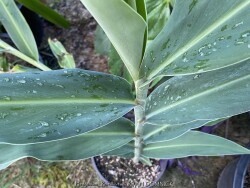

Hardy Ginger (Hedychium) are typically grown for their late summer flowers and vertical wide-leaf foliage. The plants are large tropical and subtropical herbaceous perennials with a rhizomatous rootstock native to areas with a summer monsoon and dry winter. They can be grown as flowering summer patio plants. If growing as a potted plant and trying to overwinter, allowing the foliage to frost is ok, it will not kill the root system. However, do not allow the pot with rootball to freeze solid or go below 20 degrees for more than a few hours; move into a cold garage or basement over the winter with no watering. Cut back and allow to go dormant and place entire pot back out in April or May with a time-release fertilizer. Another more labor intensive way to overwinter cannas is to remove them from the dirt, dust with fungicide, place in box with sawdust, and keep in the refrigerator. We consider this method old-fashioned and too much work but ok if you only want to save a few pieces. If digging from the ground, just save a big chunk with the dirt intact and place into a large pot in the garage. During the growing season, fertilize, water regularly, and place in full sun. You may also plant these in the ground for an enormous tropical effect! It is possible to overwinter these in the ground in Kansas by mulching 6-12" thick over deeply planted rhizomes. New growth may be slightly delayed but probably quick to regain full height. Native habitat for most hedychiums aligns well with our dry winters and warm humid summers. In our trial gardens in Lawrence, KS (zone 6a), we will be testing several varieties in 2022-2023. Famous plantsman, Tony Avent, owner of Plant Delights Nursery in Raleigh, North Carolina, advised us that hedychiums should survive fine here in the ground when mulched like cannas.
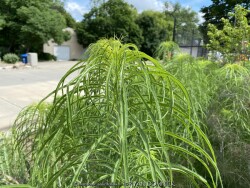

Willow-Leaved Sunflower is a herbaceous perennial with very fine textured leaves and golden sunflowers native to the central United States, primarily in the Great Plains and Ozark Plateau. Extremely fine textured leaves are a bright green and resemble Amsonia Hubrichtii. Upon close inspection, the foliage is quite a bit longer and sways in the breeze more readily. Mature plants have multiple and branched stems from the ground creating a nice bush like effect. This alone could be a main reason to grow this plant. In late summer, golden flowers emerge at the top of the plant covering the foliage for about 4 to 6 weeks. As with any plant in the Sunflower family, pollinators go crazy over the flowers. Willow-leaf sunflower thrives in most garden soils except extremely wet or extremely dry ones but prefers rocky outcrops with heavy soil. Full sun is needed to avoid possible floppiness, even then, some staking but be required if strong winds whip the tall flowering stalks. The only maintenance is at some point in the winter trim back to the ground. Use in the landscape as a specimen plant or a small grouping where are you really went to attract attention. Combine with any course textured plant or just about any other flower except other late blooming gold flowers. Several new cultivars exist with different shades of flowers and shorter, more compact growth heights.


Lenten Rose (Helleborus) is the ultimate dry-shade plant for eastern Kansas landscapes. Most hellebores are native to mountainous wooded regions of Europe with limestone bedrock and calcareous, humus-rich soils. They have everything a gardener might ask for; beautiful spring flowers, dependable dark green foliage, evergreen during winter, appreciation for alkaline soils, and ease of care with very low maintenance. Hellebores are one of the first perennials to start growing in the spring with flowering occurring even with hard freezes. Flowers last incredibly long 2 to 3 months and finally turn greenish in June. No deadheading is needed because the foliage just absorbs the flower stalks as they fade. Summer and fall foliage is dark green, dependable, and pest-free. Evergreen foliage is hardy to about 0°F. If it gets colder than that, hellebores will be deciduous with no detrimental effects. Desirable self-seeding may gently occur around mother plants. Hellebores do have an Achilles heel however; they cannot tolerate wet or poorly drained soils, not even slightly. In areas with too much rainfall or poorly drained soils, foliage diseases and root rot are likely to occur. Hellebores are also not the best choice for full sun, while they will survive, they will get foliage burn in the summer when over 100°F in afternoon sun. With poisonous foliage, these plants resist deer and rabbit browsing. What a great plant for the dry shade garden! There are many improved flowering cultivars to choose from now. Helleborus 'Sandy Shores' HONEYMOON® is a new series from Walters Gardens hybridizer Hans Hansen. In his breeding work, he selects for plants with notable vigor, showy floral displays with large numbers of blossoms per plant, and rich flower colors.'Sandy Shores' bears 2½-3", single pale apricot flowers with a lovely rosy pink color on the backs.
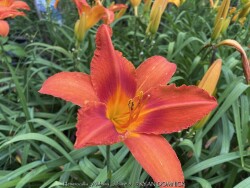

***Description for this perennial available with future update!***
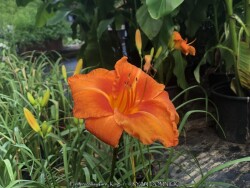

Fire King Orange Daylily, is also known as Hemerocallis 'Fire King'
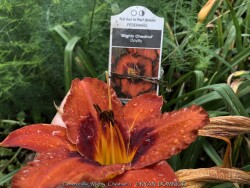

Mighty Chestnut Orange & Copper Daylily, is also known as Hemerocallis 'Mighty Chestnut'
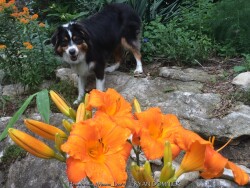

Moana Loa Orange Daylily, is also known as Hemerocallis 'Moana Loa'


>>>>>All Proven Winners® plants are legally propagated, healthy and vigorous, true to name, and tagged with color pictures and growing information.
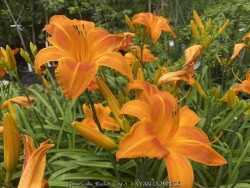

***Description for this perennial available with future update!***
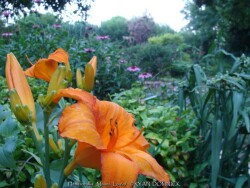

Orange Daylily, is also known as Hemerocallis cultivar.


Hemerocallis fulva is a great dry-shade groundcover useful under trees with competitive root systems. Growth in the spring is the most attractive with typical bright green daylily foliage. Orange flowers with red throat follow in summer for about a month. If dry in summer, it will go partially dormant and look bedraggled. If this happens, simply 'mow and regrow". With regular water in the fall, beautiful growth will resume. It can be invasive and should only be grown in a confined area or container. For the home garden, the species is generally too aggressive to mix with other plants. However, in a difficult dry-shade garden, it will thrive, flower, and be relatively tame. It is one of the few plants that can survive under an established Silver Maple!
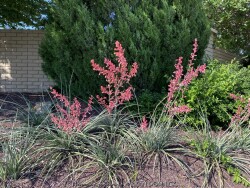

Texas Red Yucca (Hesperaloe parviflora) is a slow-growing broadleaf evergreen perennial with tall coral red flowers! Surprisingly, a native of Northeastern Mexico and Southwestern Texas can handle our extreme cold and wetness of Lawrence, KS! Normally thriving in hot, dry, desert conditions, is also surprisingly winter hardy to USDA Zone 5. Medium to blue-green leaves form rosettes about 2-3 feet tall and wide. Tall red flower spikes reliably appear on mature plants from July to October lasting 3-4 months in Kansas. If pollination is successful, attractive seed heads form later turning to black before cracking open in winter. Tough as nails, yuccas are the ideal plant for a no-maintenance garden. Normally a plant has specific requirements for success but this yucca has only a few: it cannot tolerate poorly drained soils, full shade, or North exposures. This and other yuccas look best when combined with other flowering plants providing texture and color. In mass plantings, red yucca can create an interesting architectural look. Combined with ornamental grasses, red yucca can create stunning contrasts with winter grass colors of pink, orange and rust. Red flowers are pollinated by hummingbirds and certainly deserve a place in native plant / pollinator garden. Not a true yucca, this is actually a Hesperaloe, a closely related genus also related to century plants. A large group of Hesperaloe survived -16 degrees F and a week of single digit highs in February, 2021 with no mulch. I have also seen miles upon miles of this plant growing in the medians along multi-lane interstates in Dallas. All plants were healthy looking with no missing or dying plants; truely a tough plant. Truely a 4-seasons plant for your yard!
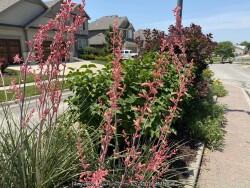

Texas Red Yucca (Hesperaloe parviflora) is a slow-growing broadleaf evergreen perennial with tall coral red flowers! Surprisingly, a native of Northeastern Mexico and Southwestern Texas can handle our extreme cold and wetness of Lawrence, KS! Normally thriving in hot, dry, desert conditions, is also surprisingly winter hardy to USDA Zone 5. Medium to blue-green leaves form rosettes about 2-3 feet tall and wide. Tall red flower spikes reliably appear on mature plants from July to October lasting 3-4 months in Kansas. If pollination is successful, attractive seed heads form later turning to black before cracking open in winter. Tough as nails, yuccas are the ideal plant for a no-maintenance garden. Normally a plant has specific requirements for success but this yucca has only a few: it cannot tolerate poorly drained soils, full shade, or North exposures. This and other yuccas look best when combined with other flowering plants providing texture and color. In mass plantings, red yucca can create an interesting architectural look. Combined with ornamental grasses, red yucca can create stunning contrasts with winter grass colors of pink, orange and rust. Red flowers are pollinated by hummingbirds and certainly deserve a place in native plant / pollinator garden. Not a true yucca, this is actually a Hesperaloe, a closely related genus also related to century plants. A large group of Hesperaloe survived -16 degrees F and a week of single digit highs in February, 2021 with no mulch. I have also seen miles upon miles of this plant growing in the medians along multi-lane interstates in Dallas. All plants were healthy looking with no missing or dying plants; truely a tough plant. Truely a 4-seasons plant for your yard!
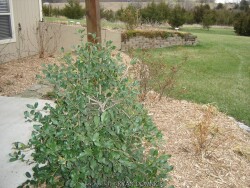

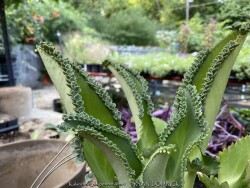

Mother of Thousands (Kalanchoe daigremontiana) is a very unusual succulent (and sometimes a weed) grown for its beautiful symmetrical foliage with neatly aligned babies (offspring) growing along the leaf edges. Tall orange flowers emerge from larger mature pot grown plants. Usually used as a patio or house plant in Kansas, they can also be grown as an annual. Grow in full sun to part sun with optional extra watering including that which comes from rainfall. Plants with time to acclimate will thrive in full sun but be careful not to rush it or sunburning will occur. Generally if moving outside for the summer, allow 2-3 weeks of part shade or morning sun before placing in full sun. Repotting may or may not be needed depending on how large you want the plant to grow; plants can continue to grow and tolerate extremely root-bound pots. Protect from temperatures below 35 degrees F and move into a bright window over the winter with no watering. Do not allow Mother of Thousands grown in pots to freeze solid or get close to freezing especially if soil is wet or death may occur. As a winter house plant, it will look presentable all winter long with just a few monthly or no waterings if you forget. As a permanent house plant, provide bright light and allow the soil to dry between waterings for many years of carefree enjoyment. Note that Mother of Thousands is called so because "babies" constantly fall off the mother plant and can become weeds in your other succulent plants. This is mostly interesting (especially for kids) to see how some plants can propagate. Undesired plants can easily be pulled out and given to a new home.
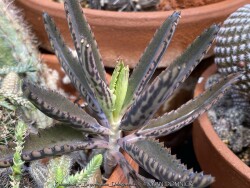

Mother of Millions (Kalanchoe delagoensis) is a very unusual succulent (and sometimes weed) grown for its beautiful symmetrical foliage with neatly aligned babies(offspring) growing along the leaf edges. Tall orange flowers emerge from larger mature pot grown plants. Usually used as a patio or house plant in Kansas, they can also be grown as an annual. Grow in full sun to part sun with optional extra watering including that which comes from rainfall. Plants with time to acclimate will thrive in full sun but be careful not to rush it or sunburning will occur. Generally if moving outside for the summer, allow 2-3 weeks of part shade or morning sun before placing in full sun. Repotting may or may not be needed depending on how large you want the plant to grow; plants can continue to grow and tolerate extremely root-bound pots. Protect from temperatures below 35 degrees F and move into a bright window over the winter with no watering. Do not allow Mother of Millions grown in pots to freeze solid or get close to freezing especially if soil is wet or death may occur. As a winter house plant, it will look presentable all winter long with just a few monthly or no waterings if you forget. As a permanent house plant, provide bright light and allow the soil to dry between waterings for many years of carefree enjoyment. Note that Mother of Millions is called so because "babies" constantly fall off the mother plant and can become weeds in your other succulent plants. This is mostly interesting (especially for kids) to see how some plants can propagate. Undesired plants can easily be pulled out and given to a new home.
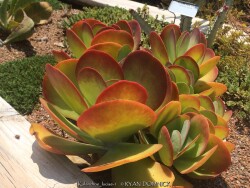

The foliage color, texture and patterns make Paddle Plant (Kalanchoe luciae) an excellent architectural specimen. Usually used as a patio or house plant in Kansas, they can also be grown as an annual. Grow in full sun to part sun with optional extra watering including that which comes from rainfall. Plants with time to acclimate will thrive in full sun but be careful not to rush it or sunburning will occur. Generally if moving outside for the summer, allow 2-3 weeks of part shade or morning sun before placing in full sun. Repotting may or may not be needed depending on how large you want the plant to grow; plants can continue to grow and tolerate extremely root-bound pots. Protect from temperatures below 35 degrees F and move into a bright window over the winter with no watering. Do not allow Paddle plant grown in pots to freeze solid or get close to freezing especially if soil is wet or death may occur. As a winter house plant, it will look presentable all winter long with just a few monthly or no waterings if you forget. As a permanent house plant, provide bright light and allow the soil to dry between waterings for many years of carefree enjoyment. Potted plants are very low maintenance needing only old leaves trimmed once per year. This is not at all a big-box store plant so be prepared to expand your plant palette with Paddle plant!
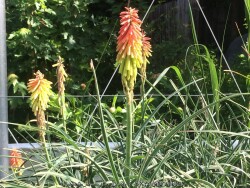

***Description for this perennial available with future update!***
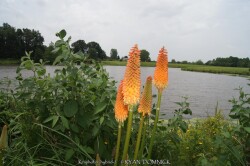

***Description for this perennial available with future update!***
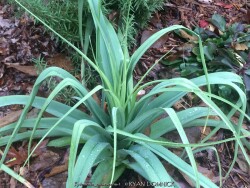

***Description for this perennial available with future update!***
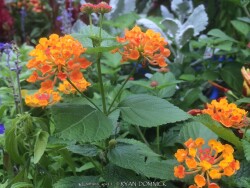

***Description for this plant available with future update!***


***Description for this plant available with future update!***
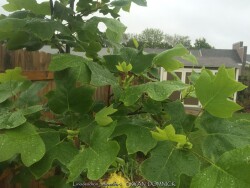

Tuliptree, is also known as Liriodendron tulipifera
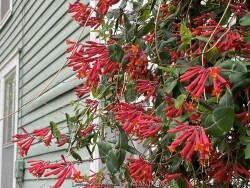

Coral Honeysuckle / American Honeysuckle (Lonicera sempervirens) is native to eastern North America. It is a vine planted for its blue-green oval shaped foliage and gorgeous reddish/pink/orange flowers. American Honeysuckle is normally used in the landscape to cover trellises, pergolas, fences, and trees. Mature vines, when allowed to climb, flower and provide a valuable food source for hummingbirds, butterflies and other birds. Grow in rich, well drained soils in part shade or full sun. Sometimes foliage persists well into fall as it is a semi-evergreen plant in the South. Other times, foliage becomes too bedraggled to be effective if summers are too hot and humid causing powdery mildew and leaf spots to occur. After establishment, most vines can be high maintenance if it has already filled the space and you don't want it to spread any further so plan accordingly. It will climb trees if you allow it to naturalize, generally using it for support and not injuring it. The growth and foliage prefers to stay within the shade of canopy not covering over it. For the home garden, the species is a great native alternative to invasive Asian and Japanese honeysuckles.
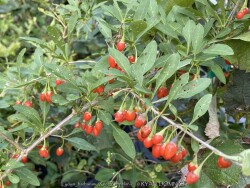

It's easy to grow your own goji berries! Though they seem like something exotic and tricky to grow, goji berries are durable, productive plants that can be grown without any special sprays, fertilizers, or even fussy pruning. Just plant them in full sun, stake them, and wait to reap a bounty of bright red fruits in autumn. Red Zeppelin® Goji Berry (Lycium barbarum 'Red Zeppelin') was selected especially for its very large fruit, which makes harvesting easier and more fun. A few things to note about growing goji berries: 1. they prefer an alkaline (higher pH) soil and don't grow well in acidic conditions. 2. goji has a natural habit of creating lots of thin, vine-like stems. To save space and make harvesting easier, we recommend that you put a very sturdy stake near the shrub after planting, then bundle the stems around the stake, tying with sturdy twine so that about one-quarter of the tops of the branches cascade downward, like a fountain. 3. Goji is generally a heavy feeder, and regular fertilizing is recommended. Apply a tomato or rose fertilizer in spring and again in early summer. The fruits are a bit bitter, like a green pepper, when they are fresh. To develop sweetness, they must be dried. If you don't have a dehydrator, spread ripe berries in a single layer on a piece of newspaper in a cool, bright spot with good air circulation. After about a week, they will feel leathery and can be stored in the fridge or freezer. Maintenance Notes: Does best in well-drained neutral to alkaline soils. At planting time, sink a 1x1" wood stake near the plant and bundle the canes around it. Let the tips of the stems cascade down, like a fountain. Each spring, move the tied point up further along the stake so that about one-quarter of the growth is above the tie. Then cut the branch tips back by 4-6". This encourages lateral branching, which is where most of the flowering and fruiting takes place. In Eastern Kansas, typically our 40 inches of rainfall is sufficient without extra water. All Proven Winners® plants are legally propagated, healthy and vigorous, true to name, and tagged with color pictures and growing information.
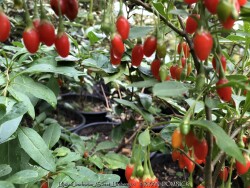

Gogi berries (Lycium barbarum) have purple flowers in mid-summer develop into jewel-like red fruits that are bitter and tomato-like when fresh but turn sweet when set out to dry for a week or so. Very high yielding, especially in alkaline soils. Sweet Lifeberry Gogi Berry (Lycium barbarum 'Sweet Lifeberry') was selected for its extra-sweet fruit which makes for easier harvesting. Maintenance Notes: Does best in well-drained neutral to slightly alkaline soils. At planting time, sink a 1x1" wood stake near the plant and bundle the canes around it. Let the tips of the stems cascade down, like a fountain. Each spring, move the tied point up further along the stake so that about one-quarter of the growth is above the tie. Then cut the branch tips back by 4-6". This encourages lateral branching, which is where most of the flowering and fruiting takes place. Grow superfruit in your own backyard! Fruits become especially sweet when dried. Goji berries are easy to grow in full sun, although some staking is recommended for maximum access to the nutrient-rich fruit. A pollinator is not needed. In Eastern Kansas, typically our 40 inches of rainfall is sufficient without extra water. All Proven Winners® plants are legally propagated, healthy and vigorous, true to name, and tagged with color pictures and growing information.
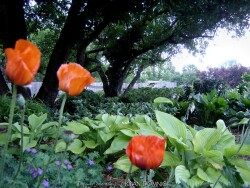

>>>>>Ultra cold-hardy plants from northern climates normally dislike our long hot humid summers; although we are on the Southern edge of this plants adaptability, it still survives reasonably well here. Look for a cold microclimate planting location such as East or North exposure.>>>>>
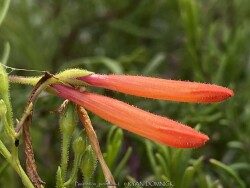

***Description for this perennial available with future update!***
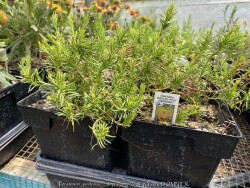

***Description for this perennial available with future update!***
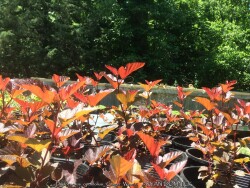

Ginger Wine® Ninebark (Physocarpus opulifolius 'Ginger Wine') expands the color palette for these easy care, native flowering shrubs. Spring foliage emerges a sunny orange color and matures to sparkling burgundy. Clusters of white flowers cover the plant in late spring, and these age to attractive red seed heads. This disease-resistant shrub does best in full sun locations and cooler climates. Top reasons to grow Ginger Wine® ninebark: 1.Colorful from spring through fall. 2. Native to North America. 3. Very low maintenance: no pruning or deadheading required. Ultra cold-hardy plants from northern climates normally dislike our long hot humid summers; although we are on the Southern edge of this plants adaptability, it still survives reasonably well here. It will not handle extreme drought; the Lawrence KS summer of 2011 and 2012 killed many plants that were not under an irrigation system. Look for a cold microclimate planting location such as East or North exposure but still in full sun. All Proven Winners® plants are legally propagated, healthy and vigorous, true to name, and tagged with color pictures and growing information.
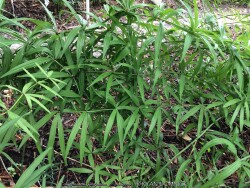

Solomon Seal (Polygonatum sp.) is a very large genus of perennials comprising dozens of species. Many of the species that are appropriate for garden use in Kansas are native to seasonally dry to moist forests in North America and Asia. Orange Flowering Climbing Solomon's Seal (Polygonatum kingianum / huanum) is definitely not typical of the genus! This plant has "climbed" above other Solomon seals! New vining growth several feet tall arises each year from a non-spreading rhizome. The foliage has a central stem with architecturally arranged opposite leaves covering the length of the stem gradually getting smaller towards the end. Two tiny hooks are located on the tips of each leaf, helping it to gently cling onto a structure or other plant for support. Elongated bell-shaped flowers appearing in spring are orange with green tips, yes ORANGE! This small "vine-like" plant is a curiosity and specimen plant. Grow in moist, well drained forest soil with average irrigation. This beauty can reach 12' tall but in our Kansas display garden, we are on year 3 (2021) with growth about 3' and increasing each year.
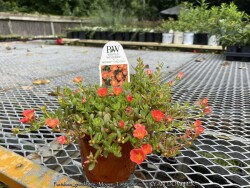

***Description for this plant available with future update!***
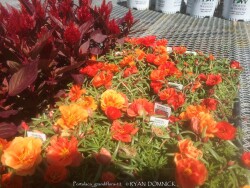

***Description for this plant available with future update!***
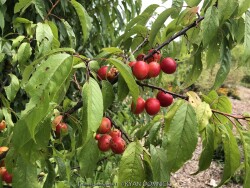

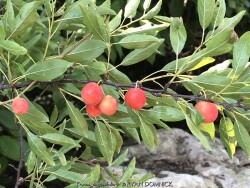

Native Edible Sand Plum, is also known as Prunus angustifolia


***Description for this plant available with future update!***
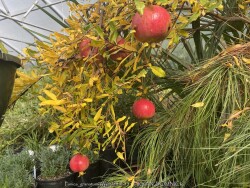

Hardy Pomegranite (Tropical), is also known as Punica granatum 'Wonderful'
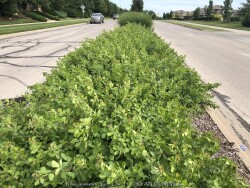

Gro-low sumac (Rhus aromatica 'Gro-low') is a dwarf spreading cultivar of Rhus aromatica native to much of the central United States including Kansas. It features bright green leaves that turn brilliant red in the fall. Light yellow flowers and occasional red berries are also ornamental features. This sumac is commonly grown as a spreading groundcover shrub for difficult areas. It will grow in full sun or full shade in medium to dry soils including dry-shade. However, fall color is quite a bit reduced in full shade. In the landscape, it is commonly used as large mass planting on hills. Because of its tolerance for adverse conditions including poor soil and rock, it is often one of the last resort plants that will survive in certain areas. It competes well under large shade trees and helps absorb leaf litter allowing it to break down and add nutrients back to the soil. It is important to keep on the dry side to discourage root rot disease. This plant also does well in hot dry parking lot islands or along busy roads. Plants adapt well to hot south or west sides of the house enduring temperatures of over 100 degrees F with no foliage burn. Plants can also be planted on the north side of a house being extremely cold hardy with no winterkill. Another great spot is planting on top of a retaining wall allowing it to cascade down. We do not recommend planting in small areas or in spaces that it will overrun neighboring plants. Unlike other sumac, it only spreads above ground as horizontally growing stems touch the ground and root. This does make maintenance easier to control the spread of the plant versus digging out rhizomes. Considered one of the most versatile and best plants for solving your most difficult landscape challenges.
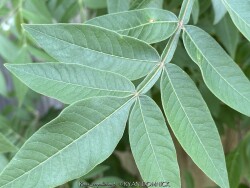

>>>>>Flameleaf / Winged Sumac (Rhus copallinum) features bright green leaves that turn brilliant red in the fall. Light yellow flowers and occasional red berries are also ornamental features.>>>>>>It will thrive in full sun in medium to bone dry soils. In the landscape, it is commonly used as large mass planting on hills and berms. Because of its tolerance for adverse conditions including poor soil and rock, it is often one of the last resort plants that will survive in certain areas. This plant also does well in hot dry parking lot islands (hell-strips) or along busy roads. Plants adapt well to hot south or west sides of the house enduring temperatures of over 100 degrees F with no foliage burn. Another great spot is planting on top of a retaining wall allowing it to cascade down. We do not recommend planting in small areas or in spaces that it will overrun neighboring plants. Avoid potentially poorly drained areas or root-rot will occur.
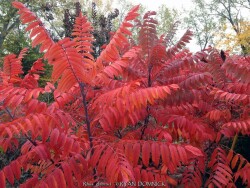

>>>>>Smooth Sumac (Rhus glabra) features bright green leaves that turn brilliant red in the fall. Light yellow flowers and occasional red berries are also ornamental features.>>>>>>It will thrive in full sun in medium to bone dry soils. In the landscape, it is commonly used as large mass planting on hills and berms. Because of its tolerance for adverse conditions including poor soil and rock, it is often one of the last resort plants that will survive in certain areas. This plant also does well in hot dry parking lot islands (hell-strips) or along busy roads. Plants adapt well to hot south or west sides of the house enduring temperatures of over 100 degrees F with no foliage burn. Another great spot is planting on top of a retaining wall allowing it to cascade down. We do not recommend planting in small areas or in spaces that it will overrun neighboring plants. Avoid potentially poorly drained areas or root-rot will occur. >>>>>>>>>Rough-leaf dogwood is a suckering shrub or rarely a small tree to 15 ft. It is native woodland edges and tall-grass prairie ravines in Kansas olong with the Great Plains and Midwestern regions of the United States. This dogwood is easily recognized by the rough, upper leaf surfaces with flat-topped clusters of creamy-yellow flowers and white fruit on reddish brown or gray twigs. Fall color is purplish-red. Cream-white flowers about 1/4 inch wide, with 4 petals characteristic of all dogwoods. Numerous flowers are in broad clusters at the ends of branches, appearing from April to early June. White fruit then appears in late summer and early fall. A favorite of many wild birds, the fruit is usually stripped clean within a couple weeks. It spreads from root sprouts and provides cover for wildlife and erosion control along ditches. Other uses of roughleaf dogwood include buffer strip around parking lots, highway medians, dust screens along country roads, and naturalizing. It will grow in full sun or full shade in medium to dry soils including dry-shade. However, fall color is quite a bit reduced in full shade. Because of its tolerance for adverse conditions including poor soil and rock, it is often one of the last resort plants that will survive in certain areas. For the home garden, the species is generally too aggressive to mix with other plants especially when irrigated and growing in rich soil. However, in a difficult dry-shade garden, it will thrive, flower, and be relatively tame with little spreading.
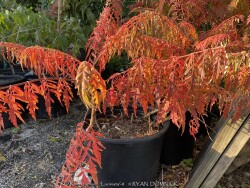

Cutleaf Staghorn Sumac, is also known as Rhus typhina 'Lanciniata'


When Tiger Eyes® sumac (Rhus typhina 'Tiger Eyes') was released, it shocked the horticulture world with unseen beauty. It started as a random mutation from cutleaf staghorn sumac (Rhus typhina 'Laciniata') that was successfully propagated. Foliage emerges in spring as a lovely chartreuse color tinged with pink new growth and contrasting leaf petioles. Growth matures to a bright yellow golden color throughout the summer. By October, especially before and around Halloween, foliage turns bright orange with hints of red. Foliage quickly freezes and drops off for the year when temperatures reach 30 degrees F. The overall architectural shape of the shrub is attractive in winter often looking like a deciduous bonsai tree up to 6 feet tall. While the original species, staghorn sumac (R. typhina), is highly aggressive and considered invasive in the garden, the Tiger Eyes cultivar (lacking as much chlorophyll) is quite a bit less aggressive from rhizomes. Some spreading will occur each year and can be clipped off with no further efforts by the plant to spread until the following year. However if soil conditions are rich and moist, some spreading can still occur. This also makes the plant more susceptible to verticillium wilt so it's best to just avoid these kind of pampered garden conditions. We recommend planting Tiger Eyes sumac on berms, tops of retaining walls and/or non-irrigated gardens in poor/dry soils. Another good micro-climate is the hot South or West side of a house; heat and drought are never an issue with no foliage burn in our zone 6a garden of Eastern Kansas. During some years with excessive humidity and rainfall, foliage can become diseased and drop off before fall color can develop but this does not seem to hurt the plant. This problem is usually avoided if planting in good air circulation in full sun or on top of a berm. Another point of advice with Tiger Eyes sumac is to allow a few nearby shoots from the root system to grow and eventually replace the mother plant. Individual top growths will usually last about 5 to 7 years before declining and dying. A plant in our display gardens has survived 15 years using this previously described method. Nowadays, there are several different ornamental shrub choices for gold summer color and while tiger eyes sumac was one of the first, it is still a great choice. Rhus typhina 'Bailtiger' TIGER EYES® if offered for sale, are original (non-propagated) plants from Bailey Nurseries Inc.
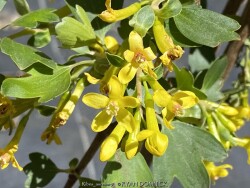

***Shrub descriptions available with future update!***


Chinese Sacred Lily (Rohdea japonica) is a tropical-looking evergreen herbaceous perennial native to China and Japan. They are considered the ultimate dry-shade plant for eastern Kansas landscapes. They have everything a gardener might ask for; dependable dark green foliage, colorful red long-lasting fruits, evergreen during winter, and ease of care with very low maintenance. Evergreen foliage is daylily-like and hardy to about -10°F. If it gets colder than that, rohdea will be deciduous with no detrimental effects. The red fruits in the crowns of established plants persist many months through the winter! Rohdeas are also not the best choice for full sun. While they will survive, they will get foliage burn in the summer when over 100°F in afternoon sun. With poisonous foliage, these plants resist deer and rabbit browsing. Rohdea tolerates most soils except for poorly drained ones. Growth is quite slow with young plants but speeds up with establishment and rich soils with regular water. Established plants have thrived in our Lawrence Kansas zone 6a display garden for over 15 years enduring temperatures as low as -18°F. and periods with many days in a row in the single digits and negative low temps. Repeated or successive cold winters with complete foliage loss can be an issue with this and many evergreen zone 6/7 plants. One occasional difficult winter followed by mild winters is more tolerable. It's tolerance for deep shade makes up for this though. What a great plant for the dry shade garden!
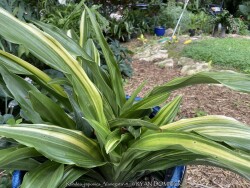

Chinese Sacred Lily (Rohdea japonica) is a tropical-looking evergreen herbaceous perennial native to China and Japan. They are considered the ultimate dry-shade plant for eastern Kansas landscapes. They have everything a gardener might ask for; dependable dark green foliage, colorful red long-lasting fruits, evergreen during winter, and ease of care with very low maintenance. Evergreen foliage is daylily-like and hardy to about -10°F. If it gets colder than that, rohdea will be deciduous with no detrimental effects. The red fruits in the crowns of established plants persist many months through the winter! Rohdeas are also not the best choice for full sun. While they will survive, they will get foliage burn in the summer when over 100°F in afternoon sun. With poisonous foliage, these plants resist deer and rabbit browsing. Rohdea tolerates most soils except for poorly drained ones. Growth is quite slow with young plants but speeds up with establishment and rich soils with regular water. Established plants have thrived in our Lawrence Kansas zone 6a display garden for over 15 years enduring temperatures as low as -18°F. and periods with many days in a row in the single digits and negative low temps. Repeated or successive cold winters with complete foliage loss can be an issue with this and many evergreen zone 6/7 plants. One occasional difficult winter followed by mild winters is more tolerable. It's tolerance for deep shade makes up for this though. What a great plant for the dry shade garden! Rohdea japonica 'Variegata' is a beautiful variegated variety with dark green and yellow stripes; very dramatic in winter!
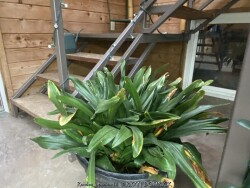

Chinese Sacred Lily (Rohdea japonica) is a tropical-looking evergreen herbaceous perennial native to China and Japan. They are considered the ultimate dry-shade plant for eastern Kansas landscapes. They have everything a gardener might ask for; dependable dark green foliage, colorful red long-lasting fruits, evergreen during winter, and ease of care with very low maintenance. Evergreen foliage is daylily-like and hardy to about -10°F. If it gets colder than that, rohdea will be deciduous with no detrimental effects. The red fruits in the crowns of established plants persist many months through the winter! Rohdeas are also not the best choice for full sun. While they will survive, they will get foliage burn in the summer when over 100°F in afternoon sun. With poisonous foliage, these plants resist deer and rabbit browsing. Rohdea tolerates most soils except for poorly drained ones. Growth is quite slow with young plants but speeds up with establishment and rich soils with regular water. Established plants have thrived in our Lawrence Kansas zone 6a display garden for over 15 years enduring temperatures as low as -18°F. and periods with many days in a row in the single digits and negative low temps. Repeated or successive cold winters with complete foliage loss can be an issue with this and many evergreen zone 6/7 plants. One occasional difficult winter followed by mild winters is more tolerable. It's tolerance for deep shade makes up for this though. What a great plant for the dry shade garden!